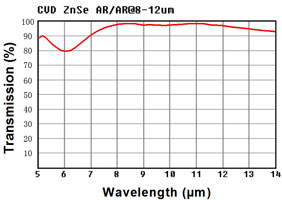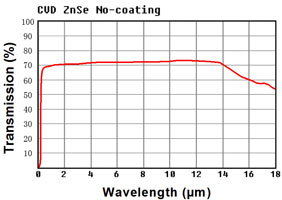Taxation Committee [2011] No. 27
General Administration of Customs:
The “Curriculum Implementation Plan for 2012†has been reviewed and passed at the eighth plenary session of the Customs Tariff Commission of the State Council and submitted to the State Council for approval. Implementation will take effect on January 1, 2012.
Notice is hereby given.
Attachment: Tariff Implementation Plan for 2012
State Council Customs Tariff Commission
December 9, 2001
annex:
Tariff Implementation Plan for 2012
I. Import tariff adjustment
(i) Most favored nation tax rates:
1. The MFN rate remains unchanged.
2. We continue to apply specific taxes or compound taxes on 52 kinds of products such as photosensitive materials (see Attached Table 1).
3. The tariff quota management continues to be implemented for 47 categories of commodities such as wheat. A certain amount of cotton with additional imports will continue to be subject to a provisional tax rate in the form of a sliding tax, and the sliding criterion will be properly adjusted. For fertilizers such as urea, compound fertilizer and diammonium phosphate, a tentative quota tax rate of 1% will continue to be implemented (see Table 2).
4. The nine-individual information technology products continue to be subject to customs verification management.
(II) Implement a provisional tax rate on certain imported commodities such as fuel oil (see Annex III).
(3) According to the trade or tariff preference agreement signed between China and the relevant countries or regions, the treaty tax rate shall be applied to the relevant countries or regions (see the Fourth Schedule):
1. Continued implementation of Asia-Pacific trade agreement tax rates on 1,860 tax items originating in South Korea, India, Sri Lanka, Bangladesh and Laos;
2. To continue to implement the China-ASEAN free trade agreement tax rate for certain taxable commodities originating in Brunei, Indonesia, Malaysia, Singapore, Thailand, the Philippines, Vietnam, Myanmar, Laos and Cambodia;
3. Continued implementation of the China-Chile Free Trade Agreement tax rate on 7,265 tax items originating in Chile;
4. Continued implementation of the China-Pakistan free trade agreement tax rate on 6,466 tax items originating in Pakistan;
5. Continued implementation of the China-New Zealand Free Trade Agreement tax rate on 7276 tax items originating in New Zealand;
6. Continued implementation of the China-Singapore Free Trade Agreement tax rate on 2,766 taxable items originating in Singapore;
7. Continue to implement the China-Peru free trade agreement tax rate on 7042 tax items originating in Peru;
8. Continued implementation of the China-Costa Rica Free Trade Agreement tax rate on 7239 tax items originating in Costa Rica;
9. Zero tariffs on 1,734 tax items originating in the Hong Kong region and having preferential origin criteria;
10. Zero tariffs on 1,259 tax items originating in the Macau region and having preferential origin criteria;
11. The 608 taxable goods originating in the Taiwan region continue to implement the early-harvest plan agreement tariff rate for the goods trade under the Cross-Strait Economic Cooperation Framework Agreement.
(d) According to trade or tariff preference agreements, bilateral exchange notes and relevant State Council decisions signed by China and relevant countries or regions, Ethiopia, Benin, Burundi, Eritrea, Djibouti, Congo, Guinea, Guinea-Bissau, Comoros, Liberia, Madagascar, Mali, Malawi, Mauritania, Mozambique, Rwanda, Sierra Leone, Sudan, Tanzania, Togo, Uganda, Zambia, Lesotho, Chad, Central Africa, Afghanistan, Bangladesh, Nepal, Timor-Leste, Yemen, Samoa, In Vanuatu, Equatorial Guinea, Angola, Senegal, Niger, Somalia, Laos, Myanmar and Cambodia, 40 UN-concerned LDCs have implemented preferential tax rates (see Table 5).
(e) Ordinary tax rates remain unchanged.
Second, export tariff adjustment
(1) The export tax rate of the "export tariff" remains unchanged;
(2) To impose a provisional tax rate on some exported products such as ferrochromium; and to impose special export tariffs on certain chemical fertilizers (see Annex 6).
Third, the tax tariff adjustment
According to the revised situation of the World Customs Organization's 2012 edition of the "Harmonious System" catalog, combined with China's actual production and trade, the tariff line of China's taxation will be converted accordingly (see Annex 7), and some tax terms and tariffs will be adjusted according to domestic needs (see attached table). Eight). After conversion and adjustment, the total number of royalties for 2012 is 8,194.
Note: After the first, second, third, sixth and eighth schedules are attached, the remaining schedules are temporarily held.
Schedules: I. Specific Taxes and Compound Tax Rates for Imported Commodities
II. Tariff Quota Merchandise Import Tax Rate Table
Third, the temporary tariff rate of imported goods
Fourth, the import goods agreement tax rate table
V. Table of preferential tax rates for imported goods
Six, export commodity tax rate table
Seventh, 2011-2012 taxation version transfer correspondence table
VIII. Import and Export Tax Tariff Adjustment Table
The transmission range of Zinc Selenide ZnSe-CVD is 0.5 - 20 µm.
ZnSe CVD used for high power CO2 laser optics at 10.6µm, for protective optics windows or optical elements in FLIR (forward looking infrared) thermal imaging equipment, optics for medical and industrial applications (optical plane parallel windows (plates, disks, blanks), wedged windows, optical meniscus, spherical and cylindrical lenses, prisms, resonator mirrors of CO2 laser).
The refractive index is near 2.4. Zinc Selenide has a very low absorbtion coefficient and is used extensively for high power infrared laser optic. It is non-hygroscopic.
Zinc Selenide (ZnSe) - transparent in wide spectral range from yellow (visible) to far IR. ZnSe material is a chemically inert, non-hygroscopic and highly pure product that is very effective in many optical applications due to its extremely low bulk losses, high resistance to thermal shock and stability in virtually all environments, easily machined.
Special care should be taken when handling Zinc Selenide as it is a toxic material. Always wear rubber or plastic gloves to avoid risk of contamination.



Zinc Selenide Co2 Laser Lens,Zinc Selenide Focusing Lens,25.4Mm Znse Lens,Zinc Selenide Lens
China Star Optics Technology Co.,Ltd. , https://www.realpoooptics.com
